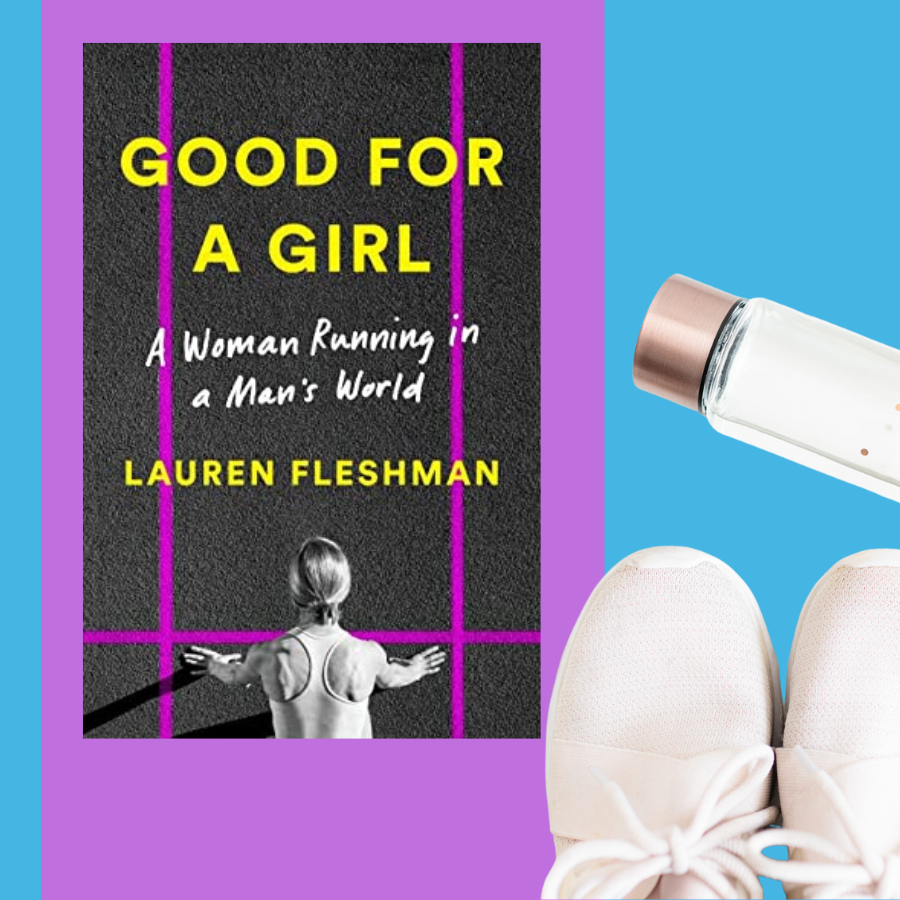This post may include affiliate links, which means we make a small commission on any sales. This commission helps Feminist Book Club pay our contributors, so thanks for supporting small, independent media!
As one of most decorated American distance runners of all time, Lauren Fleshman has toed many starting lines. Her book, Good for a Girl: My Life Running in a Man’s World, tells about many of those in gripping detail. She makes those race stories compelling even to someone who has never been more than a recreational runner. But the book is poignantly about the other, invisible lines she straddled along the way. TW/CW: ED
As a college athlete, from a young age, she was tasked with staying on the right side of the line when it came to disordered eating. In addition to the stress of competition coupled with the changes that come with age, time and time again, she had to make the conscious choice to value her own health and longevity–even as she saw other women in similar situations forced to make difference choices. As a result, those athletes often saw short-term gains and long-term, sometimes devastating loss.
Growing up working class, running became what Fleshman described as her “portal to a wider world.” I was tempted to say that running propelled her–to Stanford, to National titles, to professional sponsorship with Nike and, later, to Oiselle. But everything I read in Good for a Girl makes it clear that Fleshman propelled herself. Her grit shines through her story and these pages. She also benefited from coaches invested in her and family–notably her father–who strongly believed in her success.
Fleshman, in her relatable, smart, and sometimes heart-breakingly honest prose recounts the pressures she faced in her journey to becoming a professional athlete–problems that were often systemic and deeply ingrained in the sport. Running fast “allowed [her] to inhabit her body in a way that nothing else could.” But, in many ways, the sport has failed to adequately protect and value the bodies of women runners.
Good for a Girl details the immense pressure to be thinner, especially when it seemed like her development might cause her to plateau as a runner. College running culture does not adequately acknowledge the facts of the biologically female body–that puberty and development play a role in sport and that there are ebbs and flows in certain athletic ability, that women athletes need to experience these changes in order to flourish–both athletically and personally.
These are things I have heard about before, but what Fleshman witnessed, and her descriptions throughout Good for a Girl of the persistence of these standards and the lengths to which some coaches have gone were astounding to read. Most women’s teams are still coached by men. And many of them have put all sorts of measures of place–from strict diets, weekly weigh-ins, and other measurement standards and means of control to create a culture of disregulated, if not disordered eating.
The problems did not end when Fleshman turned pro. At Nike, She was ignored and then objectified. Her salary would be suspended if she got pregnant. It could be cut due to injury or poor performance, never to be restored. She described a general atmosphere of nightmarish tenuousness, where the, company, at best, knowingly and systematically devalued its athletes and, at worst, ignored the abuse suffered by runners such as Mary Cain, who was encouraged to get thinner and thinner to the detriment of her own health by one of the team’s coaches.
As someone who came to running later in life with no eye towards competition other than beating my own personal record, and listening to some sweet books on the journey, I learned quickly that running does not equate to weight loss for me or for many people. And, when training for a big race, it actually might mean the opposite. Following the advice of sports dietitians who focus on food as fuel and encourage runners to think beyond the scale, I also learned how key continuing to eat enough is to fueling performance and feeling functional after long runs. Before I took this to heart, I was basically useless after my big efforts. I can’t begin imagine trying to run at the level of these women without adequate nutrition.
In the face of all of this, Fleshman has been a force, as an accomplished athlete, but also through leading by example, by becoming a coach herself, writing about her experiences on her own website and now through this book.
“I want to leave the sport better than I found it,” she writes. Good for a Girl is just one of the ways she is doing just that. Throughout her career, she has fought against and shed light on inequalities and inconsistencies in the sport, just as she has done by putting these stories out into the world. I found myself cheering for her so many times throughout this book–both on and off the track.
If you have struggled with disordered eating while running, or training, or otherwise being an athlete, I urge you to check out these ED Resources for Athletes compiled by Shalane Flanagan, Elyse Kopecky, Natalie Bickford, MS.


